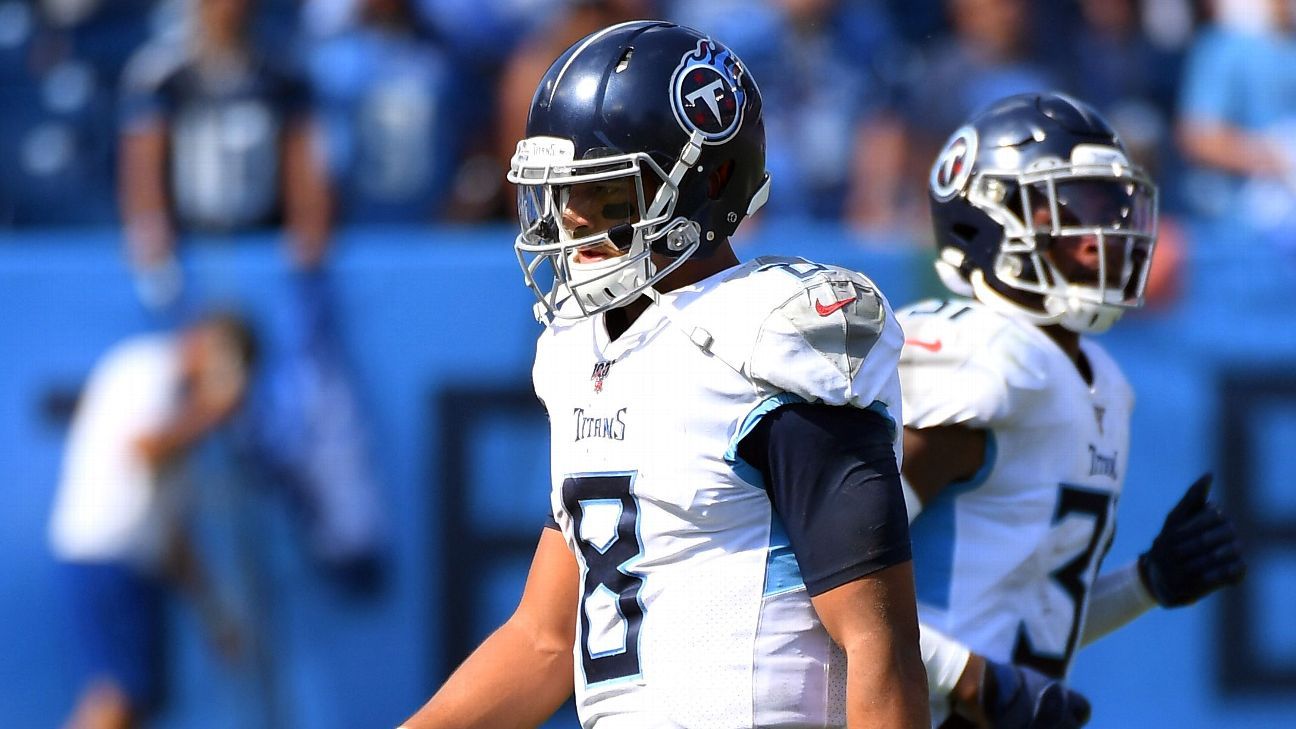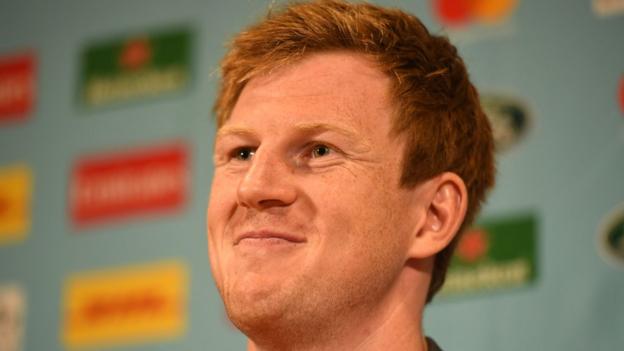Wales fly-half Rhys Patchell says he is fit to face Georgia in the Rugby World Cup opening game on Monday.
Patchell suffered a head injury against Ireland in the final World Cup warm-up game against Ireland and was forced off the field.
The fly-half suffered two concussions playing for Scarlets in 2018-19 season.
"The return to play is going fine and I am available for selection," said Patchell.
There were fears the 26-year-old could miss the World Cup but he has come through the concussion protocols and is fit for selection alongside fellow fly-half Dan Biggar.
"These things take the time they take. I've learnt that over the years," said Patchell.
"There is no point worrying about it. You've got to be philosophical about these things and be quite relaxed.
"The more worked up you get the chances are the more your symptoms will persist. Was there much of an issue?
"I had probably the best night of sleep I'd had in months on the Saturday after it happened and that always helps. Once you get back into return to play you have to trust the medics and get on with it. Whatever happens, happens."
Patchell outlined what players went through before they were allowed to return to action.
"There are a lot of tests," said Patchell.
"You have to remember words and be able to do a series of balance and cognitive tests and they will ask you what the 10 words were at the end of the test.
"Right from the start you have to try and remember what they are. There is a cognitive sports test.
"There are also the symptoms, You can't return to do much until you are symptom free and the medics I have encountered have been good with that and have not pushed it.
"They ask how you are feeling and you and there is a gradual return to play in terms of the amount you can do in training.
"It is a pretty thorough process and the hardest things is do I feel all right. Yes or No in terms of it is almost a danger of you think too much about and almost give yourself a headache. Do I have a headache because I am thinking too much about it almost?
"We are a long way away from that now and looking forward to being fit for selection for Georgia."
Patchell was caught in the head by the knee of Ireland back-rower CJ Stander and the fly-half admitted he was working on his tackling technique.
"Yes it's probably something we're always conscious of," said Patchell.
"We're always doing tackle club on the end of Tuesday sessions with Wales. So tackling is always a work on."
Wales have today travelled from Kitakyushu to Toyota City where they play their opening game.
The squad has been rocked by backs coach Rob Howley's departure from the team over an alleged betting breach with Stephen Jones arriving on Thursday to replace him.
Patchell and Dan Biggar were name-checked by Warren Gatland as stepping up in training.
"Being a leader is part of the job description," said Patchell.
"You have to try and understand the coaches message and be able to deliver that on the training field and in the game.
"That is part and parcel of being a 10.
"The situation is not ideal but he (Rob Howley) put some excellent building blocks in place and the real big parts of the game this weekend were put in place early doors.
"Jinks (Neil Jenkins) has taken on a bit more responsibility as well and pulling together to make sure we perform on Monday night.
"That's the focus. Whatever has happened has happened and everything is looking forward. "There is no use looking back. Unfortunately that has happened and let's crack on with the rugby.
"Steve is an awesome coach and has a lot of enthusiasm for the game and has a real deep understanding of the game should be played.
"I think the boys will enjoy what he has to bring. I am sure you will see a bit of Stephen's influence in terms of the odd thing even for the Georgia game possibly."
Listen again: Sam Warburton's guide to RWC captaincy
Pick your Wales XV to play Georgia
Pick your players from the list below
Can't see this selector? Visit this page: Pick your Wales XV to play Georgia
All pictures in the selector from Huw Evans Images.

























 Phone: (800) 737. 6040
Phone: (800) 737. 6040 Fax: (800) 825 5558
Fax: (800) 825 5558 Website:
Website:  Email:
Email: 






